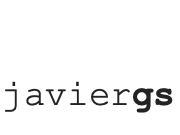
International Conference of Software Engineering and Applications (CIISA) 2008
Guadalajara, Jalisco, Mexico. September 2008.
Tutorial
10:45–13:45, Monday (Sep 5) — Hotel Hilton, Salon Mexico III C
Abstract
RUP conforms the most used standard methodology for the analysis, implementation and documentation of object-oriented systems. RUP is not a system with firm-stablished steps defined but a set of context and needs adaptable methodologies of each organization: bigger or smaller.
The goal of this tutorial is to grow, in the software architectures, the ability to set the formal building lineaments to develop robust applications, following the strategies and defined techniques in the Rational Unified Process (RUP).
The tutorial is contextualized in an “small organization” scenario where the quantity of involved resources (time, human resource and financial) are normally minimum. Contrary to it was thought RUP offers excellent work alternatives in a scenario with this characteristics.
Slides
These are the slides of this tutorial, I will appreciate your comments and feedback.
Objectives.
Learning and applying the 5 key principles of RUP while developing software projects:
- Adapting the process. The process is adapted to the particular characteristics of the project or organization. The size of the process as well as its type and its conditional regulations, affects on its specific design.
- Priority balance. The requirements of the different investors could be different, opposite or fight to use the same limited resources. It most be found a balance which cover all needs and desires from the different stakeholders.
- alue-centered iteractive demo. The projects are handled, even on a inside management, on iterative stages. On each iteration there is analyzed the investor opinion, the stability, the quality, and the project is redefined as well as the risk involved within the system.
- Level up the abstraction level. This dominant principles generate the use of reusable elements. A high abstraction level allows discussions on different architectural levels.
- Quality focus. It needs to be assumed that the quality is part of the development process and it is not an independent group or stage.
Video
This is a video that summarized the conference activities
